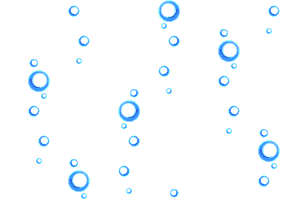Dr. Eugenie Clark, “The Shark Lady” By Anne Doubilet
- Harry Rabin
- Mar 5, 2015
- 3 min read

Dr. Eugenie Clark passed away on the morning of February 25, 2015 after a long and record-breaking battle with lung cancer and a ground-breaking, extraordinary career. “The Shark Lady” was and will continue to be an outstanding role model for all of us. Her science coupled with her sense of humor and fun made her a person from whom one learned and with whom one couldn’t wait to embark on adventures. She carried a twinkle in her eye and a compelling sense of mischief. She impacted the lives of so many; there are so many Genie stories from all over the world! She possessed a rare talent for communicating science to the lay person as well as the professional. Whenever she spoke we listened. She published more than 175 articles in scientific journals (up to the just published years long study of sand fishes in AQUA) and popular magazines, conducted over 70 submersible dives—the deepest to 12,000 feet—and led more than 200 field research expeditions to the Red Sea, Caribbean, Mexico, Japan, Palau, Papua New Guinea, Solomon Islands, Thailand and Borneo. She wrote two popular bestsellers that were reprinted in many languages—Lady with a Spear (1951) and The Lady and the Sharks (1969.) She was a pioneer in the use of SCUBA diving for research and paved the way for women in a male-dominated world of sharks and fishes. In the early 1950’s she started Mote Marine Lab as the Cape Haze Marine Laboratory in Sarasota, Florida in a shack on the beach. Today Mote is a world-class research institution with classrooms, programs and an aquarium that continues her groundbreaking lifelong research.
Genie’s research with sharks started in the 1950’s when she began working with experiments proving that sharks can learn. Lemon sharks were trained to push targets and ring bells for food. In the Steinitz Marine Lab in Eilat, Israel, Genie conducted experiments with sharks that unlocked the secret of a shark repelling poison emitted by the Moses sole. This complex toxin proved to be both a hemo AND neuro toxin that passes simultaneously through the circulatory and neurological systems.
Genie was the recipient of numerous awards and honorary degrees including The Explorers Club Medal; Medal of Excellence from American society of Oceanographers; Underwater Society of America; Society of Women Geographers; the National Geographic Society; International SCUBA Diving Hall of Fame; Women Divers Hall of Fame; Legend of the Sea from Beneath the Sea; NOGI Award from the Academy of Underwater Arts and Sciences.
She was my teacher and mentor for over half my life. She taught me the value to never accept no and continually ask why. She made science come alive and an integral part of our daily life. One of my Genie stories unfolded in the Sea of Cortez while shooting a story on sharks for Nat Geo Magazine. We had a magical encounter with a 40 foot long whale shark. Then Genie jumped onto it’s back between the dorsal fin and tail and took off into the deep blue—a tiny figure on a behemoth’s back—we thought we’d never see her again. She was a true explorer.

40 foot whaleshark Sea of Cortez. R to L: Genie Clark, Anne Doubilet, Flip Nicklin
I am so fortunate to have been part of Genie’s sphere and worked worldwide with her on eight of the dozen stories she authored for National Geographic Magazine as well as participating in many of her expeditions. She so inspired me and influenced my life. Genie Clark’s lifelong work and her unique voice set the foundation for all the shark and ocean conservation programs now in the forefront of today’s world. She is legend and her legacy, in addition to groundbreaking research and work, is the hundreds—perhaps thousands-- of young people she inspired to love the sea and enter marine science. Links: NY TIMES article CBS NEWS-NATGEO-RED SEA


























![Dan Orr on our industry and the Corona Virus [COVID-19] pandemic.](https://static.wixstatic.com/media/9cdeab_41de8eb464e44d2697639b78df84c071~mv2.jpg/v1/fill/w_356,h_250,fp_0.50_0.50,q_30,blur_30,enc_avif,quality_auto/9cdeab_41de8eb464e44d2697639b78df84c071~mv2.webp)
![Dan Orr on our industry and the Corona Virus [COVID-19] pandemic.](https://static.wixstatic.com/media/9cdeab_41de8eb464e44d2697639b78df84c071~mv2.jpg/v1/fill/w_74,h_52,fp_0.50_0.50,q_90,enc_avif,quality_auto/9cdeab_41de8eb464e44d2697639b78df84c071~mv2.webp)







Comentários